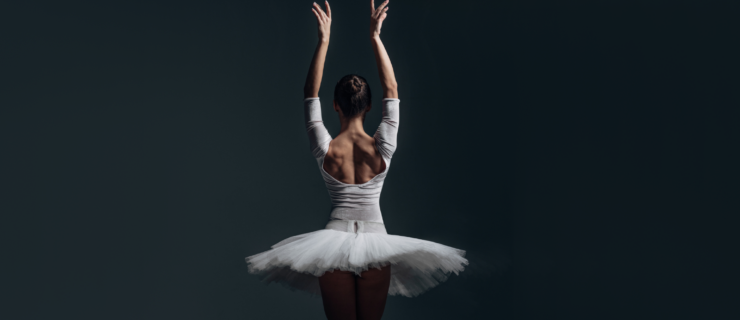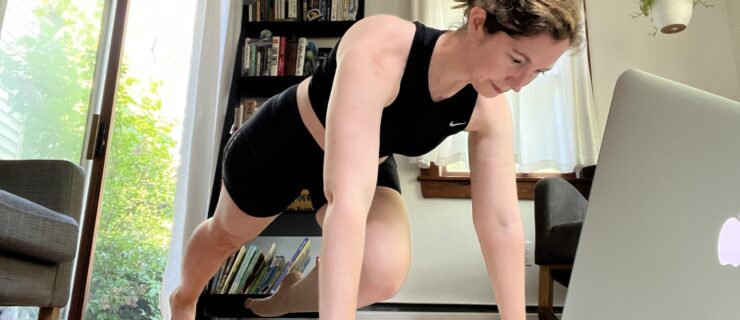Doctors for Dancers: Get to Know These Health Professionals Before Injury Strikes
Freelance dancer Rebecca Greenbaum was looking forward to a fun and lucrative Nutcracker gig when she became plagued by ankle pain. An orthopedist diagnosed her with tendonitis and sent her to physical therapy. Though it was informative, her ankle troubles persisted. “I would maybe feel better for a day, but the pain would come back,” she recalls, so her therapists suggested acupuncture. Greenbaum was skeptical, but she was willing to try anything. Finally, she found relief that lasted: Acupuncture combined with physical therapy got Greenbaum onstage, pain-free. Two years later, both treatments remain part of what Greenbaum calls her arsenal for maintaining wellness.
Getting injured is overwhelming for any dancer, and figuring out a recovery strategy can add to the stress. Oftentimes, it takes a team of medical professionals to help you return to the stage safely. Since knowing who to see can be confusing, we’ve outlined some of the most common practitioners ballet dancers might visit and why.
While it’s a good idea to have any concerns seen by a physician, there are certain injury symptoms that warrant prompt medical attention. These include acute trauma (especially involving the head), severe swelling, fever, significant or lingering pain, inability to bear weight, unexplainable weight loss or gain, or debilitating fatigue.
 A team of practitioners helped Rebecca Greenbaum get back onstage. Photo by Rachel Neville, Courtesy Greenbaum.
A team of practitioners helped Rebecca Greenbaum get back onstage. Photo by Rachel Neville, Courtesy Greenbaum.
Primary-care physicians:
Even with symptoms more mild than these, your primary-care physician is a great place to start your care. These doctors are trained to help with a variety of challenges that can impede your dancing. They’ll identify symptoms that require a specialist’s attention and make appropriate referrals.
Orthopedists and orthopedic surgeons:
Ballet injuries usually require a doctor with vast knowledge of muscles, bones and connective tissue, so this often leads dancers to an orthopedist. If there’s any concern that your injury might require surgery—for instance, if you need to have painful bone spurs removed or damaged connective tissue repaired—you can expect to see an orthopedic surgeon.
Certain situations, like a complex bone break, may require surgery, but most injuries don’t, or they can tolerate a wait-and-see approach, says Dr. David S. Weiss, MD, associate director of the Harkness Center for Dance Injuries at New York University Langone Medical Center. To determine the right treatment plan, Weiss suggests you ask “What’s the risk of the surgery?” and “What’s the risk in waiting?” All surgeries have a degree of risk, so seek a second opinion if you’re not confident with the answer to either question.
Osteopaths:
This type of physician traditionally favors preventive care and relies minimally on medication. Today, you can find osteopaths (identified by the credentials “DO”) in every medical specialty, even surgery. New York City–based dancer-turned-osteopath Dr. Stasia Blyskal, DO, explains that practitioners “receive extensive training in the interrelationship of the body’s structure and function.” For example, they might look at how the shape of your pelvis affects your turnout. Osteopathic physicians like Blyskal, who specializes in osteopathic manual manipulation, use their hands to help rebalance the body’s systems. Treatments can include the high-velocity adjustments you might associate with a chiropractor, or a more subtle technique called “osteopathy in the cranial field,” which feels like gentle pressure, lifting or lengthening. “Dancers work so hard, they sometimes think that if they’re having pain, they need to work their body harder,” she explains, “but gentle techniques can be very helpful.”
Physiatrists:
A physical medicine and rehabilitation physician, or physiatrist, specializes in injuries involving muscles, bones and connective tissue, as well as the brain and spinal cord. At your first visit, a physiatrist will test your joints for flexibility, strength and balance, and watch how you walk. Physiatrist Dr. Elizabeth Manejías, MD, who sees dancers at New York City’s Hospital for Special Surgery, says that about 60 to 70 percent of her treatments involve a type of acupuncture for the muscles, called dry needling, while other physiatrists might give injections of steroids, lidocaine or other medications.
 Acupuncture can be used to treat physical symptoms, like swelling and muscle strains, as well as mental challenges, like anxiety and exhaustion. Thinkstock.
Acupuncture can be used to treat physical symptoms, like swelling and muscle strains, as well as mental challenges, like anxiety and exhaustion. Thinkstock.
Other Wellness Professionals
Most dance injuries are neither spontaneous nor completely debilitating. Instead, they develop gradually due to poor alignment, overuse or stress. If you’re proactive, you can catch some of these problems before they become a full-blown injury. It’s wise to see a health professional, though not necessarily a physician, for irritating issues—hips that click during certain movements, or ankles that are cranky every morning. Though only an MD or DO (along with physicians assistants and nurse practitioners) can legally make diagnoses and write prescriptions, there are many other practitioners who can help with these pre-injury puzzles.
Physical therapists, certified athletic trainers and massage therapists:
In addition to getting you back into shape post-injury, these specialists can help prevent injuries, especially if they have dance-specific training. Along with manual treatments like assisted stretches and joint mobilization (where you typically relax and breathe while someone moves your bones), PTs and ATCs may suggest exercises and stretches for homework to help improve your alignment, range of motion, muscular balance and ballet technique. Massage can be a useful tool for preventing muscular imbalances that can lead to injury, and is also a popular post-performance ritual for dancers. Specializations vary, so look for professionals with certifications in sports medicine, orthopedics, rehabilitation or manual therapy.
Chiropractors:
Because of the immediate effect of their treatments, many dancers like to see chiropractors. They employ a range of techniques aimed at helping the bones become better aligned. Expect a chiropractor to explain their plan for your visit. For instant changes, they might ask you to inhale and then bend you sideways, eliciting a loud pop, or, for more gradual transformations, simply have you lie with small wedges under your pelvis. Occasionally, chiropractors support their treatments with other modalities, like acupuncture or massage.
Acupuncturists:
NYU Langone’s Harkness Center for Dance Injuries’ Megan Richardson, MS, Dipl Ac, LAc, ATC, an acupuncturist and certified athletic trainer who treated Greenbaum’s tendonitis, calls acupuncture a “reset button.” This form of ancient medicine inserts very thin needles under the skin to alter the body’s energy. It can be used to treat physical symptoms, like swelling and muscle strains, as well as mental challenges, like anxiety and exhaustion.
Healing Takes a Team
Don’t be frustrated if the professional you choose refers you to a different expert—in fact, be glad! As Greenbaum found, it often takes several kinds of treatment to fully recover. A reliable practitioner should recognize their limitations and have a good idea of who you should see next. You should also have a sense of when it’s time to try something new. “Within three to four visits, you may not feel 100 percent better, but there should be a change,” says Richardson. This is true of most treatment plans, so if your progress has plateaued, ask yourself and your provider if it’s time to try another approach.
How Important Is Dance Expertise?
Seeing a practitioner who’s familiar with ballet is ideal. If you live near a professional ballet company, find out who their dancers see. However, depending on your insurance or location, this may not be possible. Dr. Selina Shah, MD, FACP, a physician who treats dancers from San Francisco Ballet School, suggests that you be prepared to “be a partner in the process.” You may need to do a bit of teaching by demonstrating steps and explaining class format. When dance-specific knowledge is not an option, a practitioner who is curious and open to learning about ballet can be a great health collaborator.
Don’t Ignore These Aspects of Healing
- What you eat can impact injury. Without the proper balance of micro- and macronutrients, the body isn’t able to effectively repair itself, says nutritionist Heidi Skolnik, MS, CDN, FACSM, who works with students at the School of American Ballet and The Juilliard School. A nutritionist can assess your particular diet and suggest foods that will help you stay strong and heal.
- The stress-injury connection is real. Boston-area clinical psychologist Dr. Elisabeth Morray, PhD, explains that stress can lead to a feeling of bodily disconnect, which can prevent dancers from detecting the warning signs of injury. Stress can also disrupt sleep, which compromises the immune system and reduces healing. Consider working with a mental-health professional to keep your mind and body performing at their best. —EK





